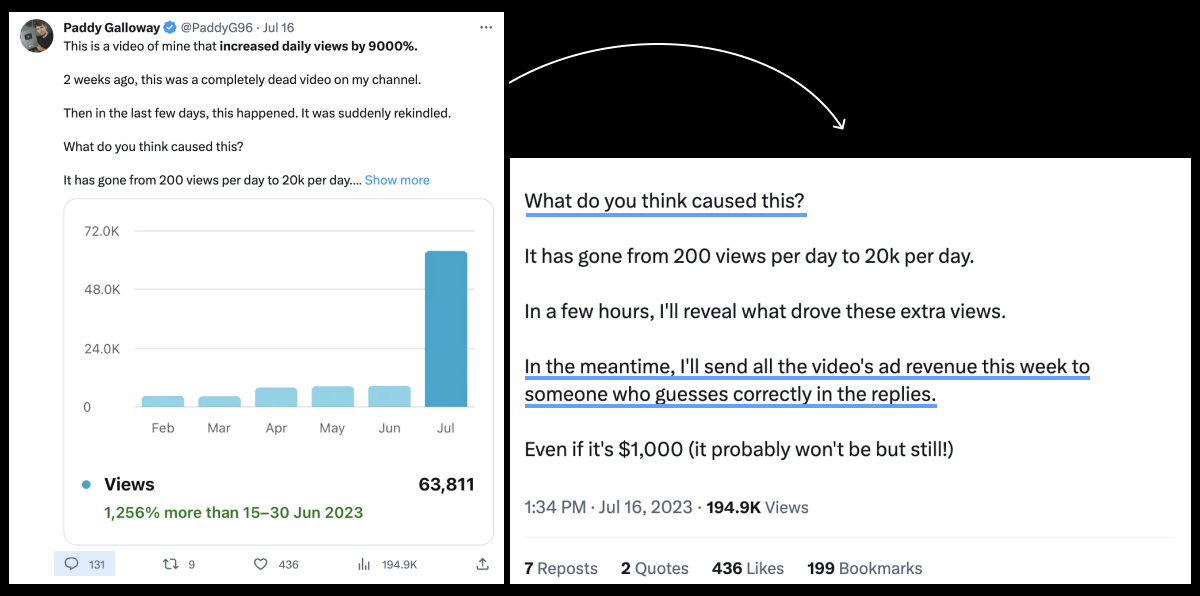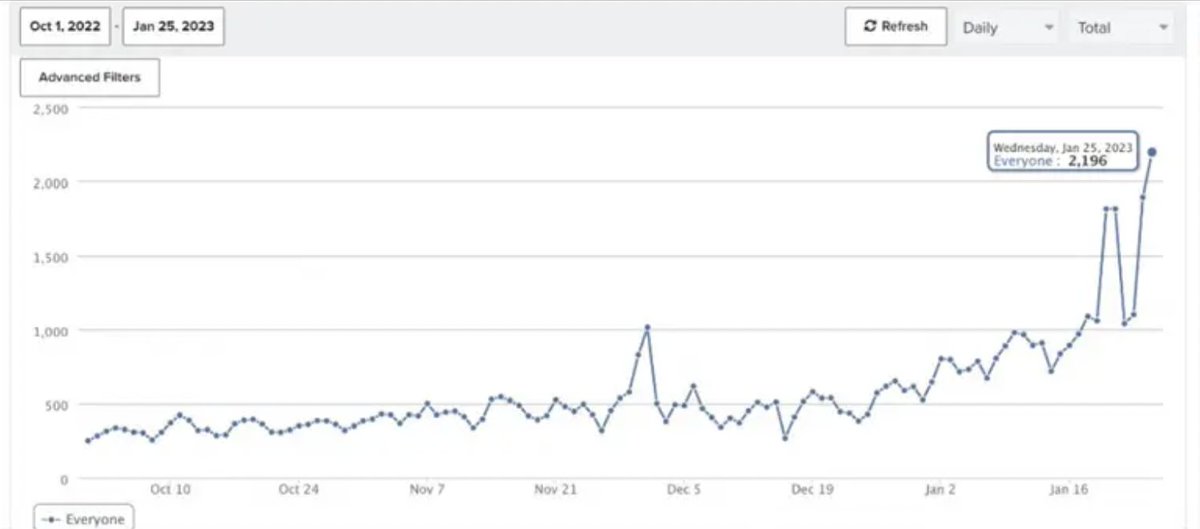What was the common denominator in the fastest growing companies like Dropbox, Netflix, Yelp, and Instagram?
Growth loops.
Not funnels.
Here are 6 examples of growth loops that will help you acquire and retain users 🧵
Growth loops.
Not funnels.
Here are 6 examples of growth loops that will help you acquire and retain users 🧵
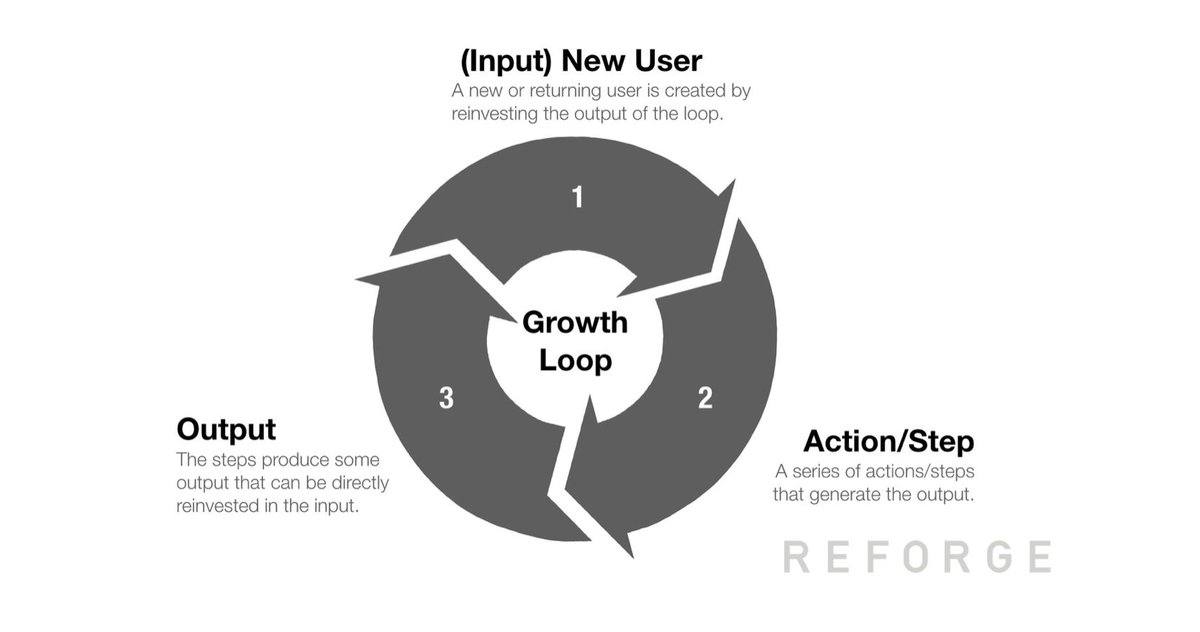
Here's why loops are better than funnels...
A funnel works top to bottom.
To get more out of the bottom...you need to put more in at the top.
This means more money.
Where funnels focus on linear growth.
Growth loops focus on compounding growth.
A funnel works top to bottom.
To get more out of the bottom...you need to put more in at the top.
This means more money.
Where funnels focus on linear growth.
Growth loops focus on compounding growth.
Look at the fastest growing products and you'll notice they acquire customers through loops. Not funnels.
@andrewchen defines loops as "closed systems where the inputs through some process generates more of an output that can be reinvested in the input."
6 examples 👇🏽
@andrewchen defines loops as "closed systems where the inputs through some process generates more of an output that can be reinvested in the input."
6 examples 👇🏽
1. Viral Acquisition Loops
1. User signs up
2. Invite or content is sent to friends
3. % of friends click the link
4. Those users engage with the invite or content
5. % of those users sign up
PayPal is another great example of using a viral acquisition loop.
(h/t @andrewchen)
1. User signs up
2. Invite or content is sent to friends
3. % of friends click the link
4. Those users engage with the invite or content
5. % of those users sign up
PayPal is another great example of using a viral acquisition loop.
(h/t @andrewchen)
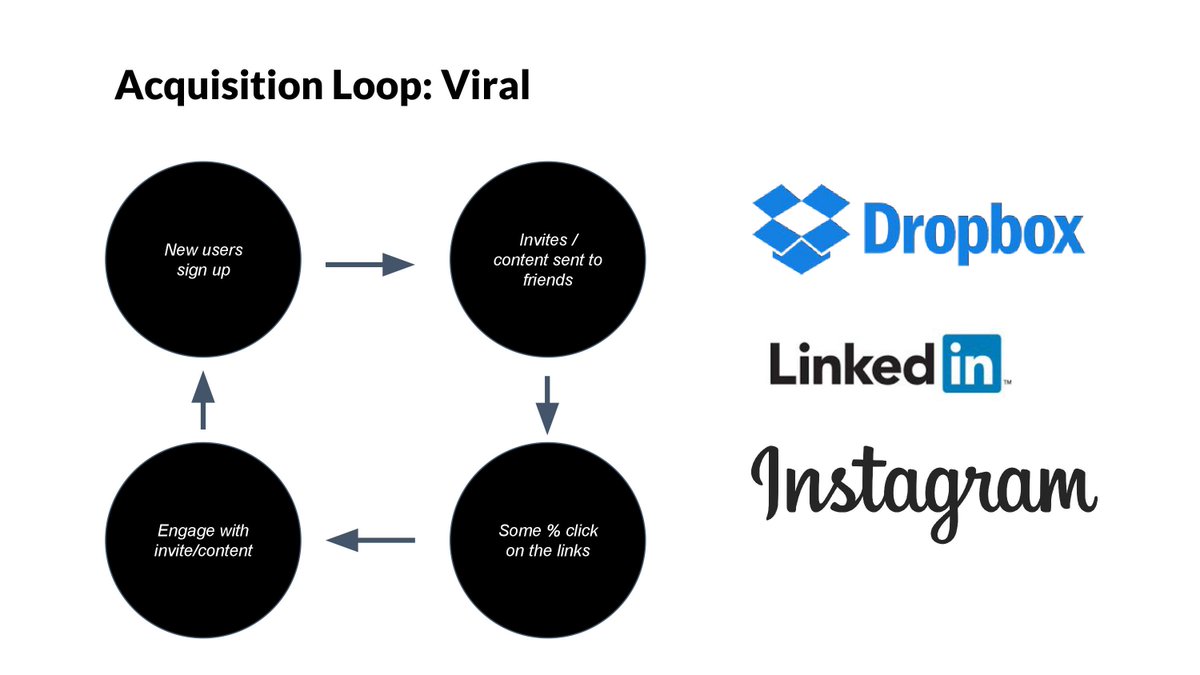
2. SEO & UGC Acquisition Loops
1. User searches and finds content
2. % of those ppl sign up and create content
3. Search engines index the top content
4. People search for content
5. They find it
6. % sign up
(h/t @andrewchen)
1. User searches and finds content
2. % of those ppl sign up and create content
3. Search engines index the top content
4. People search for content
5. They find it
6. % sign up
(h/t @andrewchen)

3. Pinterest Growth Loop
1. User signs up
2. Specific/ Relevant content activates users
3. User saves and repins content which gives Pinterest quality signals
4. Content -> Search Engines
5. User finds content via search engines and either signs up/returns
1. User signs up
2. Specific/ Relevant content activates users
3. User saves and repins content which gives Pinterest quality signals
4. Content -> Search Engines
5. User finds content via search engines and either signs up/returns

4. Survey Monkey Growth Loop
1. New user signs up
2. % of users create a survey
3. % of users send survey to others
4. Survey has a Survey Monkey landing page
5. % of surveyee's signup
6. Step one starts again
1. New user signs up
2. % of users create a survey
3. % of users send survey to others
4. Survey has a Survey Monkey landing page
5. % of surveyee's signup
6. Step one starts again

5. Netflix Retention Loop
1. Consumer consumes content
2. Netflix uses behavioral data to determine preferences
3. Netflix curates a catalog relative to watching patterns
4. They recommend curated content
1. Consumer consumes content
2. Netflix uses behavioral data to determine preferences
3. Netflix curates a catalog relative to watching patterns
4. They recommend curated content
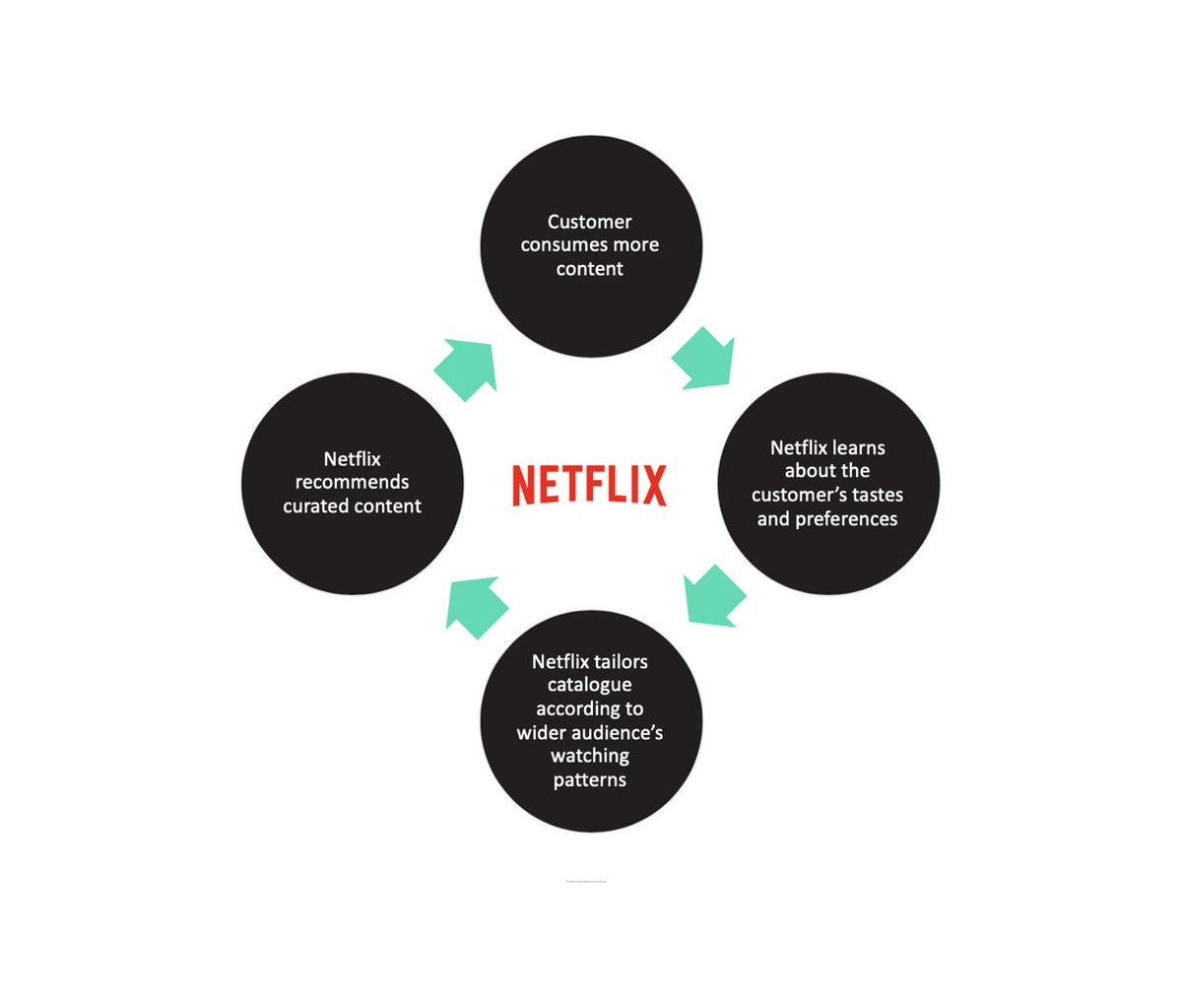
6. PicNic's Market Expansion Loop
1. User joins a waiting list in an area
2. Once threshold is met -- they expand in that region
3. User places order
4. User recommends PicNic to a friend in different area
5. % join waiting list
1. User joins a waiting list in an area
2. Once threshold is met -- they expand in that region
3. User places order
4. User recommends PicNic to a friend in different area
5. % join waiting list

I DIDN'T write these.
These 3 resources are everything you need to read to learn how to create growth loops.
1. reforge.com/blog/growth-lo…
2.
3. untaylored.com/post/how-start…
These 3 resources are everything you need to read to learn how to create growth loops.
1. reforge.com/blog/growth-lo…
2.
https://twitter.com/andrewchen/status/1058033548995657729?lang=en
3. untaylored.com/post/how-start…
Would this help you?
- marketing breakdowns
- copywriting tips
- how-tos
- growth strategies
- campaign dissection
If so, follow @alexgarcia_atx :)
I drink too much coffee and spend too much time on the internet to write valuable marketing threads for yah.
I promise.
- marketing breakdowns
- copywriting tips
- how-tos
- growth strategies
- campaign dissection
If so, follow @alexgarcia_atx :)
I drink too much coffee and spend too much time on the internet to write valuable marketing threads for yah.
I promise.
It's also a daily newsletter that I send to 6k+ marketers. (over 50% of them open it daily)
Join them 👇
bit.ly/3flYp6b
Join them 👇
bit.ly/3flYp6b
TL;DR
1. Loops are the new funnels
2. Loops focus on compounding growth
3. Fastest-products grow with loops
4. A loop's input generates an output that's reinvested into the input
5. Funnels focus on linear growth
6. More at the top = more at the bottom
1. Loops are the new funnels
2. Loops focus on compounding growth
3. Fastest-products grow with loops
4. A loop's input generates an output that's reinvested into the input
5. Funnels focus on linear growth
6. More at the top = more at the bottom
• • •
Missing some Tweet in this thread? You can try to
force a refresh





